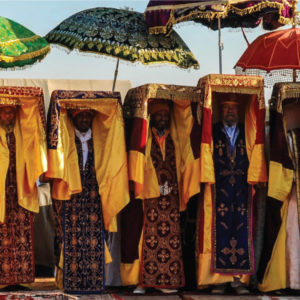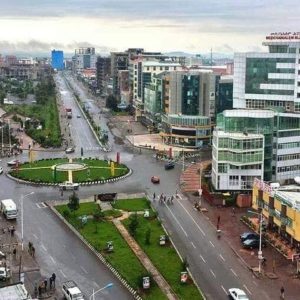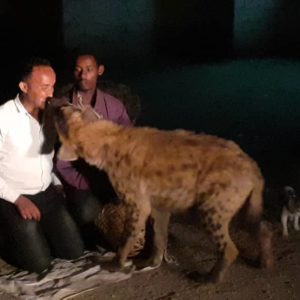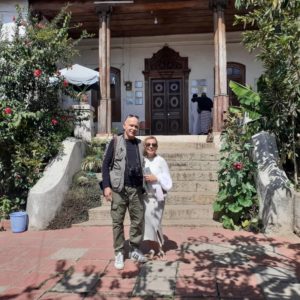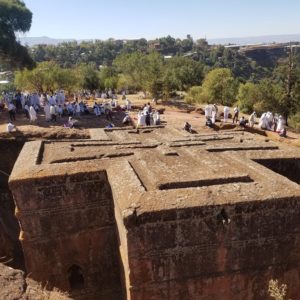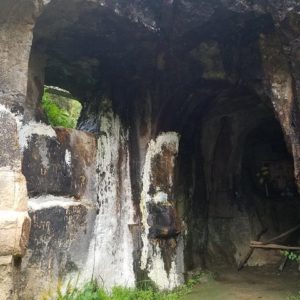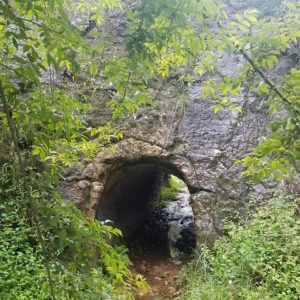-
Celebrating Epiphany | Ethiopia’s most colorful holiday of the year.
$270.00Timket is the greatest colorful festival of Orthodox Christians in Ethiopia. The festival of Timket falls on January 20. It is observed in commemoration of Jesus Christ’s baptism in River Jordan. Timket is a two-day affair and all the ceremonies are conducted with great pomp.
Timket traces its roots back to biblical times. In the early days of Judaism, a sacred box overlaid with gold was kept in the most holy place in the Jewish temple. Known as the Ark of the Covenant, it represented the coming Messiah.
-
Ethiopian New Year Eve Celebration with Addis City Tour
$69.00Highlights
Ethiopian New Year takes place in September around the 11th or 12th. It is Known as Enkutatash, which means “Gift of Jewels”. Ethiopian follow the Julian Calendar that contains of 13 months (12 months of 30 days and one month with just 5 days/6 in a leap year). The calendar is 7 years and 8 months behind the Western Gregorian calendar. The New Year signifies the end of the rainy season and the lush green landscape (from 2-3 months of heavy rain) is very picturesque dotted with yellow Meskel Flower and a great time to celebrate the new year harvest. Celebrations are both religious and secular including church services and festive family meals. Children gather yellow flowers, receive small gifts and sing.
-
HALF DAY: Market Highlights of Addis ABABA
$65.00 -
Harar City and Babile Elephant Sanctuary Tour 2 -3 days
$250.00 -
Hiking
$100.00Hiking In Groups
Every Weekend
From 3 to 6 hours
-
Lalibela, Gondar and Bahirdar | Customized
$785.00Lalibela Customized Tour
-
One day tour to Lalibela Rock-Hewn Churches
$240.00Lalibela is one of the amazing ancient cities in the world and it has been inscribed as one of UNESCO’s world heritage site in 1978.
Lalibela has a 900 years old aged rock- hewn churches. The churches are 11 in number , all made of carving a single rock and some interconnected one another. Every church in there has its own unique design. It is really something that everyone have to see in life time.Lalibela is aslo known as to be the Jerusalem of Africa !
-
Stopover Tour | Trip To Washa Michael – Rock Hewn Church In Addis Ababa
$150.00Can’t get to Lalibela, but a want to see a Rock Hewn Church near Addis Ababa? Washa Mikael!!
The Washa Mikael Rock Hewn Church (Amharic: ዋሻ ሚካኤል [wä schä mi kä el] literally “The Cave of Michael”) is a rock-hewn semi-monolithic church located in the Yeka District of Addis Ababa, the capital city of Ethiopia. Historians and the Ethiopian Orthodox Church date it back as far as the 4th century AD pointing to its resemblance to Aksumite era churches in other regions of Ethiopia and to the Sabaen artifacts found at the site of the church. They further explain that structures in and around the church show that the area was once used as a training ground for the horsemen of the Aksumite armies of King Ezana, arguing that the area was one of the territory held by the vast Kingdom of Aksum. It is a popular tourist destination.
History
Washa Mikael church was constructed in the Shoan architectural style with some influences from the Aksumite style. Similar to the some of the churches of Lalibela, Washa Mikael is a rock-hewn semi-monolithic church.
In the 19th century, Emperor Menelik II rediscovered the structure after it was initially abandoned during the Abyssinian-Adel war. He had the Tabot of St. Michael moved from inside the church to a church he had build lower down the mountain called Yeka Mikael. He subsequently made attempts at restoring and preserving the structures of the church.
The church suffered damages during the heavy bombing campaigns of the Italians during the second Italo-Ethiopian War.
From above the church has a “U” shape also known as the letter “ሀ” in the Ethiopian Alphabet. This shape was meant to signify the Ge’ez phrase starting with the same letter, “ሀልዎቱለ ኣብ እምከድሜ ዐለም” (Halwotule ab emkdme alem) which means “Before anything existed, God was here”. The original church stood 7 meters tall and had 7 windows which represented the 7 heavens, 7 days and 7 angels.
Reference : Wikipedia

